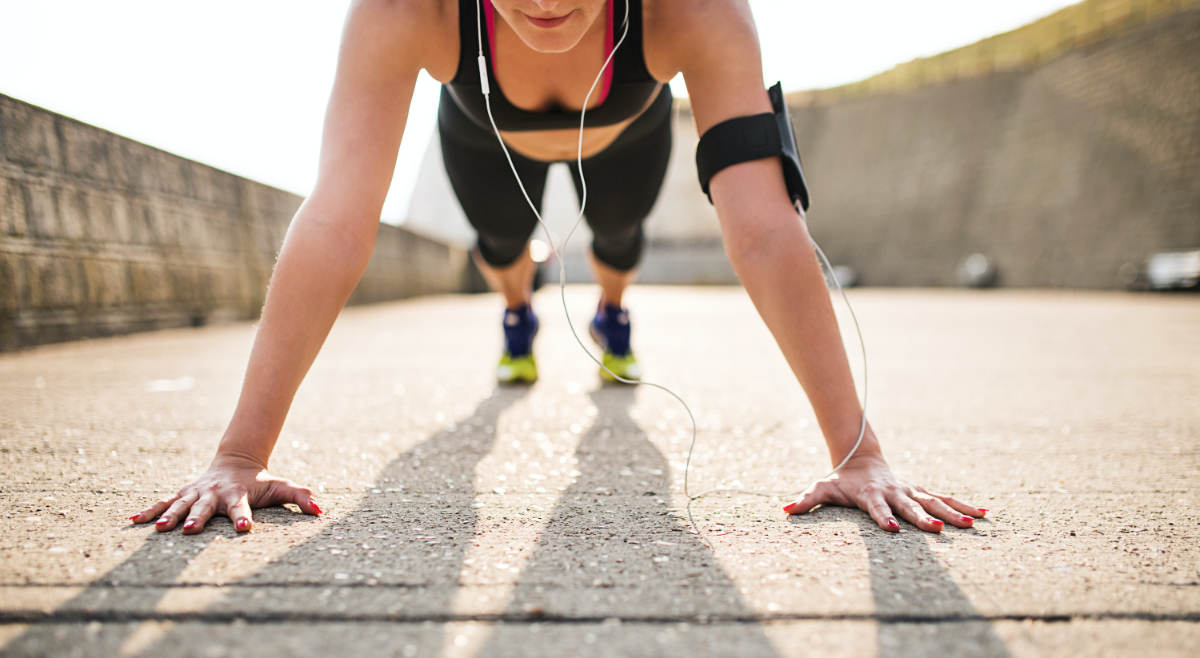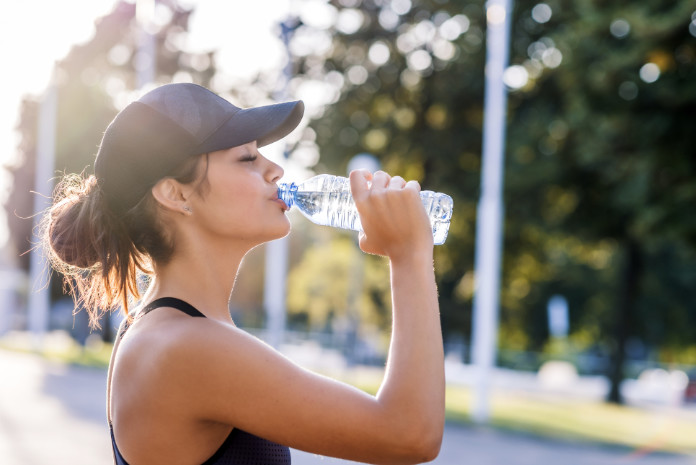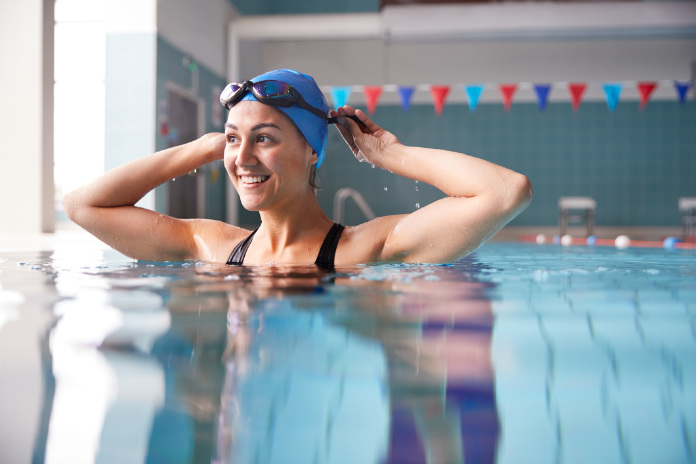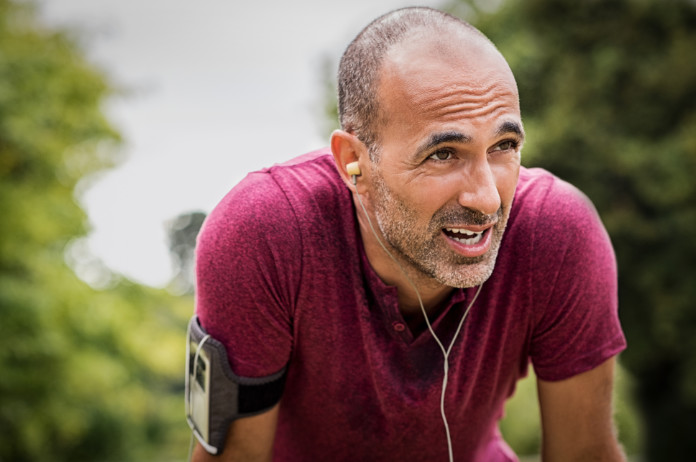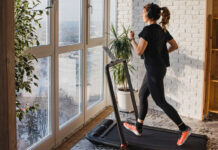Right now, many of us are enjoying getting outside and basking in the to heatwave temperatures but when the hot weather spikes in the summer, it’s important to take extra care when working out.
Exercising outdoors when it’s hot and muggy can put you at risk of heat-related illnesses, like exhaustion, cramps and heat strokes. As Dr Arun Thiyagarajan, medical director at Bupa Health Clinics explains: “Exercising in the hot weather puts extra stress on our bodies, meaning it is really important to know your limits and pay close attention to what your body is telling you.”
Dr Thiyagarajan says that getting a sweat on in hot weather can affect us in lots of different ways. “Sweating in the heat means our body is trying to cool us down, which means we are losing more fluid than usual. This can lead to a drop in blood pressure, causing the heart to beat more rapidly.”
As well as putting you at risk of dehydration, he says that exercising in extreme temperatures can put extra pressure on the kidneys, the lungs (especially if you suffer with conditions such as COPD or asthma) and the brain – as when your body temperature goes over 40C, this can stop your nerve fibres from relaying important messages around the body.
“The heat will have an effect on your workout, so make sure you take regular breaks to cool down and rehydrate,” advises Dr Thiyagarajan.
Tips for safely working out in the heat
Here, we asked personal trainers to give their tried and tested top tips for working out safely when the mercury rises….
1. Time it right
That lunchtime run might seem appealing, but it could leave you feeling exhausted and unwell for the rest of the day. “Avoid working out when the sun is at its peak – between 10am and 4pm” says PT Ben Haldon, founder of mycoachschool.com. “Getting a workout done either first thing in the morning, or waiting until the sun has set will help you to say safe and avoid that exhausted post-sun feeling.”
“Be flexible and make sure you check the weather regularly to find out when the coolest part of the day is,” adds personal trainer Carl Elliston. “You might find that you have to rearrange your schedule to fit in exercise during the coolest hours.”
Read our article What is the best time of day to exercise?
2. Hydrate, hydrate, hydrate
“Whilst you’re sleeping, your body sweats out key fluids that you need, which can leave you dehydrated,” says Elliston. “This means that you should aim to rehydrate first-thing, even if you do not feel particularly thirsty.
Just before you exercise, drink a glass of water and carry a bottle with you at all times too, he says too.
Elliston says that you should try to avoid sugary pre-workout drinks in this weather as they can dehydrate you and could actually raise your heart rate, making you sweat more.
“If you’re exercising for more than 60 minutes, you might want to consider a sports drink that contains good levels of potassium and electrolytes to replenish your body. However, moderation is key and opt for sugar free versions,” he adds.
That said, Elliston adds that overdoing it and drinking too much water can also cause problems as it can upset your stomach. “Try to leave about half an hour between downing a glass of cool water and working out to keep your stomach happy,” he advises.
3. Take a cold shower
“Before your workout, try taking a cold shower to increase the time it takes to start sweating,” advises Elliston.
“Leave your hair wet and, if it’s long, place it in a bun to reap the refreshing benefits when you go outside.
“It may feel a little weird showering before you get all hot and sweaty, but it is definitely worth it!”
4. Take up swimming
Hot weather is a good time to think about switching up your exercise routine to something more heat-friendly.
“Why not take up swimming as an alternative cardio method?” suggests Elliston. “It’s a great way of keeping you cool during your workout and provides a safe and fun way of keeping fit in the heat.”
Unless you are lucky enough to have your own pool or access to a beach or wild swimming spot, this may have to wait until public pools reopen again after lockdown restrictions are eased.
Read our article Wild swimming – 14 best UK and Ireland wild and open air swimming locations
5. Dress appropriately
It goes without saying that should avoid wearing your black winter leggings when it’s hot outside.
“Loose, breathable materials help with the evaporation of sweat, especially in lighter colours,” says Elliston.
“Avoid tight gym tops as they will make you sweat more and opt for cotton as a cheap, breathable material.”
6. Don’t forget sunscreen
“During the summer months your skin is going to be exposed to harmful UV rays, meaning that it is extremely important to top up on the sun cream to ensure you don’t burn,” says Elliston.
“Try to find sun creams that are sweat resistant and, if you’re swimming outside, it’s really important to find waterproof sun creams as the sun’s rays will reflect off the water.”
Discover how much sunscreen you should be wearing and what factor suncream to choose.
7. Know when to stop
Most of all, it’s important to listen to your body. Dr Thiyagarajan says that common symptoms of heat-related illnesses can include feeling generally unwell, intense thirst, dizziness, confusion, excessive sweating, headache, racing pulse and cramps.
If you’re experiencing any of the above, it’s important to stop your workout, head into shade and seek medical treatment if you’re feeling unwell.
Read 10 alternative exercises to do in a park or garden























































